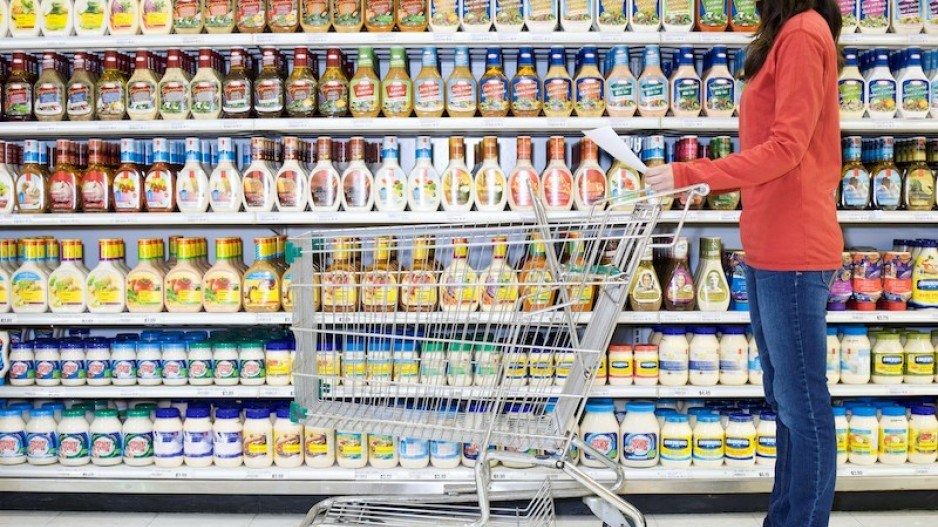Canadians’ perceptions on food have gone through significant variations over the past two decades.
In previous columns, Research Co. and Glacier Media studied how we have dinner and what types of foods we seek and avoid. This time, we wanted to look at our behaviour inside the grocery store.
Only a third of Canadians (33 per cent) say they frequently check labels in the food they buy to review the country or province of origin. Women (36 per cent) and Canadians aged 55 and over (41 per cent) are the most interested in figuring out where their food came from.
In Ontario and Quebec, 37 per cent of residents frequently look at labels to know which country or province produced their food. The proportions drop to 31 per cent in Saskatchewan and Manitoba, 30 per cent in Atlantic Canada, 28 per cent in B.C. and 22 per cent in Alberta.
Canadians are less likely to pay close attention to whether the food they are about to buy is organic (24 per cent). Canadians aged 18 to 34 are more likely to check (27 per cent) than their counterparts aged 35 to 54 (21 per cent) and aged 55 and over (23 per cent).
Alberta is ahead of all regions (28 per cent), followed by Ontario and Quebec (25 per cent each), B.C. (23 per cent), Atlantic Canada (22 per cent) and Saskatchewan and Manitoba (14 per cent).
A seal that announces the absence of genetically modified organisms (GMO) has become a prominent feature of food packaging in the past few years. Just under one in four Canadians (23 per cent) frequently look for this label in the products they buy.
British Columbia is tied with Ontario (27 per cent each) as the areas where residents are more likely to seek the “No GMO” label at the supermarket, followed by Alberta (25 per cent), Atlantic Canada (24 per cent), Quebec (20 per cent) and Saskatchewan and Manitoba (14 per cent).
At a time of inflationary concerns, just over two in five Canadians (41 per cent) are not willing to pay more for organic food – a proportion that rises to 57 per cent among those aged 55 and over.
The possibility of paying more than the cost of a “regular” product increases when consumers ponder a different feature. Fewer than a third of Canadians (31 per cent) are unwilling to pay more for a product that does not contain GMO.
Companies have been outlining their efforts to deal with climate change, mostly in industries such as logistics and transportation. Food producers are beginning to enter this discussion, but we are years away from a battle over who reduced the most greenhouse gases due to development, distribution and packaging.
When we put this matter to the consideration of Canadian consumers, their vote falls between the figures for organic and GMO: 35 per cent would not pay more for a product that reduced greenhouse gas emissions.
There is an interesting generational divide, and one that could be beneficial for some businesses from a marketing standpoint: Only 23 per cent of Canadians aged 18 to 34 would not pay more for food that is “climate change-friendly” and 42 per cent are willing to pay a premium of more than six per cent of the usual price for this product. A truthful and compelling brand story, accompanied with proper messaging, would be welcome by the country’s youngest adults.
The preceding findings do not suggest that Canadians are oblivious to the effects of climate change on their diet: Significant majorities believe it is a threat to the food supply in their province (73 per cent), the country (76 per cent) and the world (79 per cent). Time will tell if companies begin to share their commitment to a lower carbon footprint on their labels. There was a time when terms like “dolphin safe” and “phthalate free” were the exception and not the norm. Climate change mitigation may be the next frontier.
Mario Canseco is president of Research Co.
Results are based on an online study conducted from May 4-6 among 1,000 adults in Canada. The data has been statistically weighted according to Canadian census figures for age, gender and region. The margin of error is plus or minus 3.1 percentage points, 19 times out of 20.



